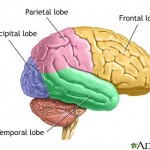Sugar and Your Health
By Dr. Cynthia Horner
I am often asked if sugar is really bad for kids. After all isn’t sugar a part of all children’s lives? Well the answer is, it is. Sugar can seriously affect your health. It can cause damaged blood vessels and high cholesterol as well as arthritic joints and degeneration of brain tissue. Processed sugar may taste good but it is an enemy of our bodies. All carbohydrates turn to sugar on our mouth or stomach. The food that starts out as sugar when eaten in excess creates problems for our bodies and our children’s bodies. For optimal health, it’s best to ask, “How much sugar does my body need?” Rather than, “How much can I eat without getting sick or fat?”
What is sugar?
Sugar cane was first used by people in the islands of the south Pacific, where it grew naturally. Their recorded use of sugar cane to enhance the flavor of food dates back to 20,000 BC. India was the first country to extract cane juice to make the first true sugar, which they called “gur” (loosely translated as “tasting sweet”). Today, sugar is made from cane or beets that are crushed and dissolved in water. The raw syrup is boiled down to a concentrate, to where some crystallizes; the remaining black/brown syrupy mixture is molasses. The crystals are processed several times and refined to increase the purity, resulting in the white crystals we know as table sugar. The whiteness is not due to bleaching. White table sugar is called sucrose.
How Does Sugar Work in the Body?
The average American kid consumes twice his body weight in sugar in a year. Sugar has an effect on emotions, energy levels and ability to concentrate. Our bodies are programmed to survive and to do that we are rewarded for eating sugar and fat. The reward is rush of an opiate like substance that makes us feel good. Kids learn early on in life become addicted to the high they get from sugar. Sucrose (table sugar) is converted in the stomach to glucose and fructose. Glucose enters the blood. Fructose on the other hand gets stored for later use by going directly to the liver where it is converted to glycogen then triglycerides. Triglycerides are stored chains of sugar that become available when the sugar stored in muscles runs out.
Our bodies try to use glucose first. Glucose passes from our stomach into our blood via blood vessels in our stomach wall, then it travels to cells for be converted into energy. Most cells need sugar for the energy of cell growth and repair and muscle movements. Brain cells need glucose to fire so our nervous system can work. Before sugar can enter a cell, it must be “accompanied” by insulin, a hormone produced by the pancreas. Disorders of insulin are called diabetes. In most cases of diabetes, the body produces adequate insulin but the cells cannot use it effectively. This occurs as the body’s response to dealing with excess sugar over long periods of time. Receptors on cell walls become less sensitive to insulin so they do not ‘open the cell door’ when insulin comes knocking the result; sugar stays in the blood.
Whether you eat sucrose, glucose, or fructose they all get stored when we are not active enough to use them up. Sugar leads to obesity and overweight people because it has been found that sugar is not only addicting but it also blocks the production of glucagons, a chemical necessary to use fat for energy. If fat is not used for energy it gets stored in our muscles and under our skin.
Any food that is digested quickly creates the feeling of hunger in a short time, and then the stomach signals the brain to send down more food. Complex carbohydrates, proteins and fats, take longer than simple sugars to digest, therefore leaving a feeling of being full. It can be said sugars make you want to eat more.
Elevated levels of sugar in the blood leads to damage in blood vessels, and this blood vessel damage can be seen in the blood vessels in the brain resulting in decline in brain function. This happens because sugar hooks on to certain fats and proteins in a process called glycation. a little glycation is expected but a lot (from excess sugar consumption) creates high levels of oxidation and high levels of oxidation result in  inflammation that damages tissues including blood vessels and brain tissue. Studies on those who have lived with diabetes for many years have found deficits in learning, memory, motor speed, and thinking functions. Frequent exposure to high sugar levels diminishes mental capacity, and have been associated with a greater degree of brain shrinkage. Even in those without diabetes, higher sugar consumption is associated with lower scores on tests of cognitive function.
inflammation that damages tissues including blood vessels and brain tissue. Studies on those who have lived with diabetes for many years have found deficits in learning, memory, motor speed, and thinking functions. Frequent exposure to high sugar levels diminishes mental capacity, and have been associated with a greater degree of brain shrinkage. Even in those without diabetes, higher sugar consumption is associated with lower scores on tests of cognitive function.
Sugar’s harmful effects on the brain don’t only occur in the long term; during a single instance of hyperglycemia (excess sugar in the blood), slows cognitive function and deficits in attention and memory. In healthy young people, brain imaging studies have suggested that in a hyperglycemic state, the brain’s ability to process emotion is compromised.
Is Honey Better for you Than Sugar?
Honey is the oldest sweetener known. It has been found in Egyptian pyramids. Honey contains two simple sugars, glucose and fructose, in approximately equal amounts, that is formed by an enzyme, invertase, present in the bodies of bees. Many nutritionist agree that honey is easier to digest and easier for the body to use than sugar from sugar cane. It also has abilities to kill bacteria. One pound of honey is made from two or more million flowers. Spoon for spoon, honey contains more calories than sugar, but that is because crystals of sugar take up more space on a spoon, so a spoonful of honey is actually more than a spoonful of sugar. Raw honey has the plant enzyme, amylase, which is concentrated in the pollen of flowers. It is helpful in pre-digestion of starchy foods. Try spreading raw honey on a piece of bread and allow it to sit for about 15 minutes. The raw honey will begin to break down the starches in the bread. Like sugar, honey contains some minerals and vitamins. More importantly, eating honey collected from bee hives in the region where you are living can help your body handle pollens and other allergens that may cause allergic immune reactions.
How about Coconut Sugar?
This sweetener has been around for years but has become popular recently. It is often called palm sugar and comes from the sap of cut flowers of the coconut palm. Coconut sugar has a slightly less effect on blood sugar than regular table sugar and has several vitamins and minerals. In addition it has phytonutrients and antioxidants. It has the same number of carbohydrates and calories.
How Much do you Know About Sugar? Sugar Facts
- The average American eats 61 pounds of sugar each year.
- Halloween brings 2 pounds of candy into the average child’s stomach.
- Sugar causes a process called glycation in the skin that results damage .
- People in India have been crystallizing cane sugar for at least 2,000 years.
- In 1747 a German scientist Andreas Marggraf discovered that the sugar in the sugar beet was identical to sugarcane. In 1802 the first sugar—beet refinery began operations.
- More than half of the 8.4 million metric tons of sugar produced in United States annually comes from beets.
- Can you imagine eating 16 sugar cubes at one sitting? You do each time you consume a 20-ounce bottle of cola.
- A compound called ligduname is the sweetest compound known- it is 200.000 times as sweet as table sugar.
- Sugars are the building blocks of all carbohydrates.
- Sugars are the most abundant type of organic molecule in living things.
- The scientist who discovered splenda were trying to invent an insecticide.
